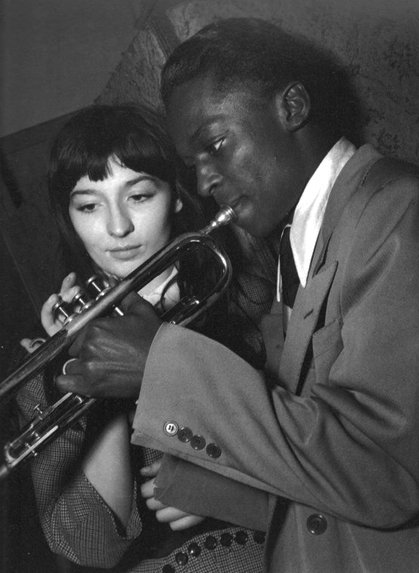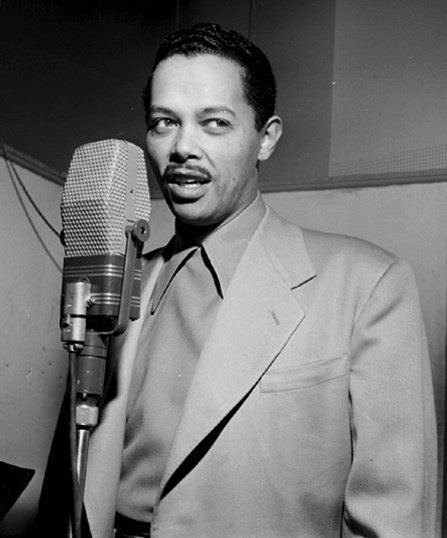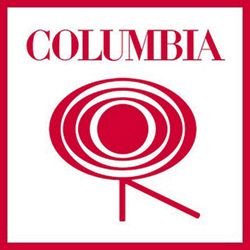Jazz post-bop: «Freedom Jazz Dance» [ESP/ENG]
(Edited)
Wayne Shorter (saxo tenor), Miles Davis (trompeta), Herbie Hancock (piano), Ron Carter (contrabajo) y Tony Williams (batería). Extraído del álbum Miles Smiles (1967) de Miles Davis.
En 1948, después de su gira con el Jazz at the Philarmonic, Miles Davis volvió al quinteto de Parker, pero las relaciones eran tensas debido al comportamiento errático de Parker causado por su adicción a las drogas, así que finalmente Davis lo abandonó. En 1949 codirigió un quinteto con el pianista Tadd Dameron y fueron a tocar al Paris International Jazz Festival. Con esta banda, Davis volvió a tocar el estilo bebop que había difundido con Parker. En su viaje a París, el primero al extranjero, se quedó asombrado por su entorno cultural y sintió que los músicos negros de jazz y la gente de color en general eran más respetados que en Estados Unidos. El público francés tuvo una respuesta entusiasta y se interesaba por las últimas tendencias musicales. Además, comenzó un romance con la cantante y actriz Juliette Gréco que duró varios años.
In 1948, after his tour with Jazz at the Philharmonic, Miles Davis returned to Parker’s quintet, but relations were strained due to Parker’s erratic behavior caused by his drug addiction, so Davis eventually left. In 1949 he co-led a quintet with pianist Tadd Dameron and went to play at the Paris International Jazz Festival. With this band, Davis returned to playing the bebop style he had spread with Parker. On his trip to Paris, his first abroad, he was amazed by its cultural environment and felt that black jazz musicians and people of color in general were more respected than in the United States. French audiences had an enthusiastic response and were interested in the latest musical trends. He also began an affair with singer and actress Juliette Gréco that lasted several years.

Al volver a Nueva York, Miles Davis se deprimió, encontró poco trabajo y se empezó a retrasar en el pago de la renta del hotel. Algunos de los músicos con los que había tocado estaban teniendo éxito en el estilo cool jazz. Se hizo adicto a la heroína, esta era muy cara, y Davis perdió el control de su vida, aunque se hizo amigo del boxeador Johnny Bratton y se interesó por el boxeo. En 1950 hizo una gira con la banda de Billy Eckstine y la cantante Billie Holiday, y fue arrestado en Los Ángeles por posesión de drogas. En 1951 firmó un contrato de un año con Prestige Records, formó un grupo y empezó a grabar álbums y a transcribir partituras para otros sellos discográficos. Para pagar su adicción a la heroína, Davis tocaba música, explotaba prostitutas y pedía dinero a sus amigos, pero en 1953 su adicción comenzó a afectar su forma de tocar.
Upon returning to New York, Miles Davis became depressed, found little work and began to fall behind on his hotel rent. Some of the musicians he had played with were finding success in the cool jazz style. He became addicted to heroin, it was very expensive, and Davis lost control of his life, although he became friends with boxer Johnny Bratton and became interested in boxing. In 1950 he toured with Billy Eckstine’s band and singer Billie Holiday, and was arrested in Los Angeles for drug possession. In 1951 he signed a one-year contract with Prestige Records, formed a band and began recording albums and transcribing sheet music for other labels. To pay for his heroin addiction, Davis played music, exploited prostitutes and asked friends for money, but in 1953 his addiction began to affect his playing.

Williams comienza a tocar y enseguida se incorpora el resto del grupo para exponer el tema, cuya melodía, ejecutada al unísono por Shorter y Davis, es incisiva y cortante. Primero entra Davis utilizando frases cortas con diferentes motivos y Hancock le acompaña tocando acordes sueltos, repetitivos e inconexos. Le sigue Shorter con un discurso interesante y creativo, pero dejando también silencios entre las frases, mientras Hancock sigue con sus ostinatos. A continuación le toca el turno a Hancock presentando una línea melódica bien concebida antes de que el grupo reexponga el tema.
Williams begins to play and the rest of the group joins in at once to expose the theme, whose melody, rendered in unison by Shorter and Davis, is incisive and sharp. Davis first enters using short phrases with different motifs and Hancock accompanies him playing loose, repetitive and unconnected chords. He is followed by Shorter with an interesting and creative speech, but also leaving silences between the sentences while Hancock continues with his ostinatos. Next it’s Hancock’s turn, who presents a very well structured and conceived melodic line before the group re-exposes the theme.

Translated with the help of DeepL
℗ Columbia Records


Si te ha gustado el tema, quizá querrás escuchar también los anteriores de este álbum:
If you liked the track, you might also want to listen to the previous ones on this album:
0
0
0.000


¡Enhorabuena!
✅ Has hecho un buen trabajo, por lo cual tu publicación ha sido valorada y ha recibido el apoyo de parte de CHESS BROTHERS ♔ 💪
♟ Te invitamos a usar nuestra etiqueta #chessbrothers y a que aprendas más sobre nosotros.
♟♟ También puedes contactarnos en nuestro servidor de Discord y promocionar allí tus publicaciones.
♟♟♟ Considera unirte a nuestro trail de curación para que trabajemos en equipo y recibas recompensas automáticamente.
♞♟ Echa un vistazo a nuestra cuenta @chessbrotherspro para que te informes sobre el proceso de curación llevado a diario por nuestro equipo.
🥇 Si quieres obtener ganancias con tu delegacion de HP y apoyar a nuestro proyecto, te invitamos a unirte al plan Master Investor. Aquí puedes aprender cómo hacerlo.
Cordialmente
El equipo de CHESS BROTHERS